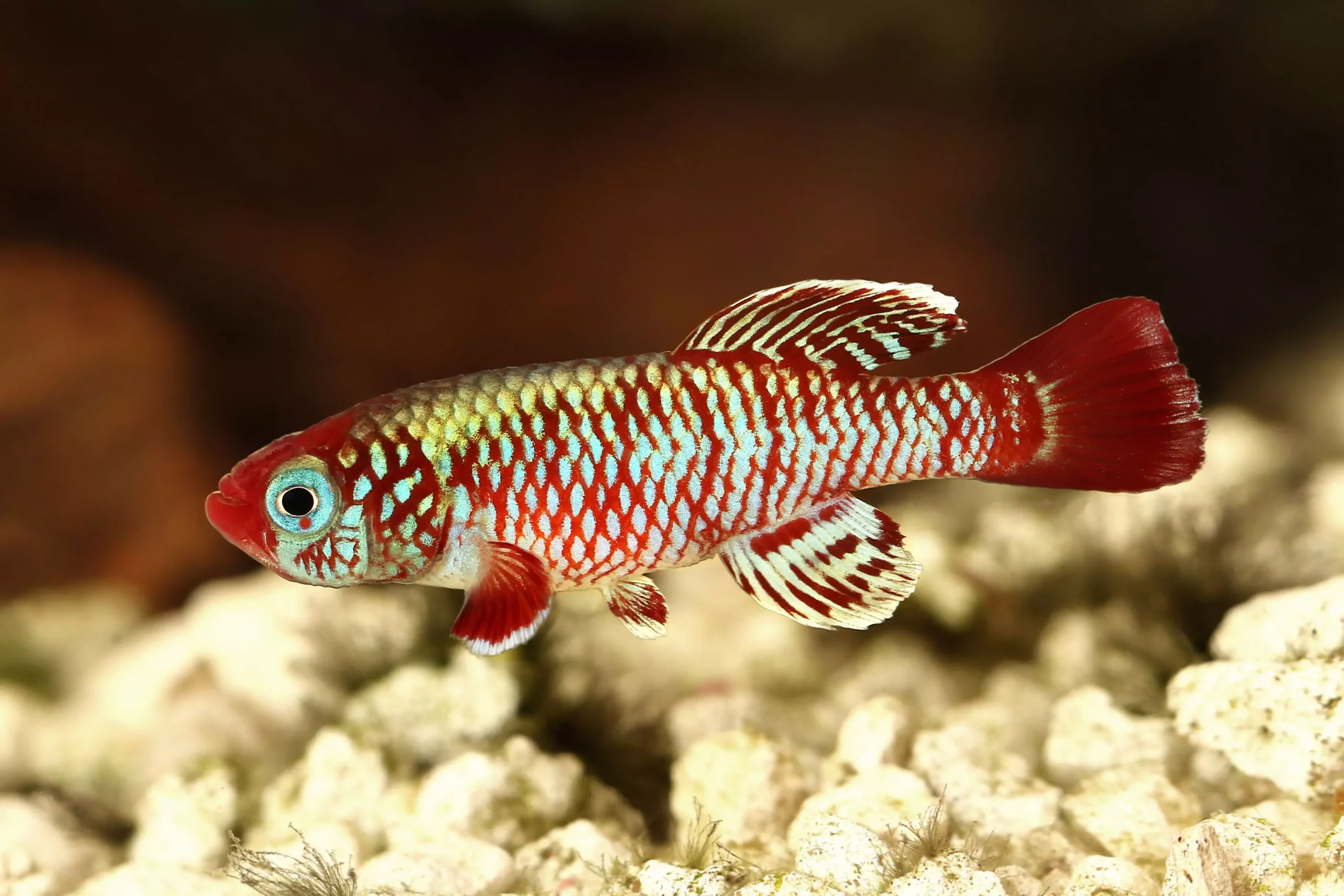Killifish, known scientifically as egg-laying tooth carps, represent a diverse group of freshwater fish that vastly differ from their live-bearing relatives, such as guppies and mollies. Found in both the New and Old Worlds, killifish are mostly distributed across the Americas, from the United States to the southern reaches of Argentina, and throughout Africa and parts of Europe and Asia. Their dual modes of reproduction—some being egg-buriers and others egg-hangers—showcase their incredible adaptability in varying environments, a defining trait that makes them a subject of interest in both aquaculture and aquatic biology.
The habitats of killifish vary significantly, with two primary environments where they thrive. Many species originate from tropical rainforests, favoring shaded areas with temperatures ranging between 72 to 75°F (22 to 24°C). These killifish are typically found in pools, streams, and swamps, where low light and muted conditions are the norm. They have a preference for laying their eggs among dense root systems of floating flora, which serve as a protective measure for their young.
In contrast, other killifish species dwell in the ephemeral ponds of tropical savannahs, where drying seasons can be brutal. These fish adopt unique reproductive strategies; they bury their eggs deep in the substrate to survive through dry periods. Often referred to as annual fish, they complete their life cycle swiftly, with some living only for a single breeding season. Their vibrant colors and intricate fin structures, though spectacular, are manifestations of their short yet dazzling existence.
Dietarily, killifish are generally predatory, largely consuming insect larvae in the wild. This feeding habit mirrors those of other small tropical fish like guppies. In an aquarium setting, they thrive on a varied diet that includes live foods, such as mosquito larvae, as well as frozen options like bloodworms and brine shrimp. While they can manage with dry flake food, providing live or frozen alternatives keeps them healthy and is recommended for optimal care.
Due to their specific dietary requirements and somewhat delicate physiological nature, killifish are not typically considered ideal candidates for community aquariums. While some species exhibit temperamentally peaceful characteristics, their unique environmental preferences, particularly for cooler water, complicate mixing them with other fish types. Consequently, proper consideration of tank mates is crucial for maintaining harmony in an aquarium setup.
For aquarists interested in keeping killifish, understanding their needs related to tank conditions is paramount. Although killifish can adapt to smaller environments, larger tanks—ideally at least 20 gallons—are preferable for providing sufficient swimming space and minimizing stress. When creating the environment, it is recommended to use darker substrates like sand or gravel that won’t alter water chemistry adversely. The lighting should be kept subdued to replicate their natural habitats, which means selecting aquatic plants that thrive under low light conditions.
Maintaining water quality is equally essential. Killifish generally favor soft, slightly acidic water, necessitating either the use of rainwater or reverse osmosis water if tap water is too hard. Regular monitoring of water parameters will ensure that their delicate physiology remains unharmed.
Breeding killifish presents a rewarding but challenging endeavor. For egg-hanging species, a substrate of boiled peat moss aids in creating a suitable acidic environment for laying eggs. Conversely, egg-burial species require a deeper layer of peat to mimic the conditions of their natural breeding grounds effectively. Typically, a ratio of one male to three females is suggested to mitigate aggressive behavior during breeding.
The time taken for eggs to hatch varies: egg-hangers may take approximately three weeks, while bottom-spawners may need to undergo a lengthy incubation process in moist peat for several months. This unique methodology demonstrates the adaptability and remarkable lifecycle of killifish, capturing the fascination of both novice and expert aquarists.
Killifish captivate aquarium enthusiasts not only with their brilliant colors and engaging behaviors but also with their diverse habitats and unique reproductive strategies. While their care requires particular attention—especially regarding diet and water conditions—they can thrive in home aquariums. Those daring enough to embark on the journey of raising killifish will gain invaluable insights into the life cycles of these extraordinary fish. Understanding their unique needs is crucial for providing an enriching environment that allows them to flourish, revealing the wonders of this often-overlooked group of fish.

